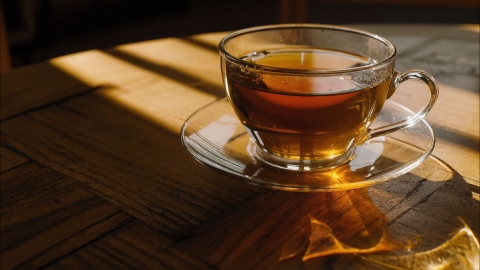What kind of tea is best for lowering the three highs (high blood pressure, high blood sugar, and high cholesterol)?
Generally, the term "three highs" refers to hypertension, hyperglycemia, and hyperlipidemia. There is usually no specific tea that is considered best for lowering these conditions. Drinking green tea, pu'er tea, mulberry leaf tea, gynostemma tea, and hawthorn tea can help reduce hypertension, hyperglycemia, and hyperlipidemia. The detailed analysis is as follows:

1. Green Tea
Green tea is rich in antioxidants such as polyphenols and catechins, which have blood pressure-, lipid-, and glucose-lowering effects. Tea polyphenols can inhibit the activity of angiotensin-converting enzyme, thereby lowering blood pressure; catechins can improve vascular endothelial function and reduce the occurrence of atherosclerosis.
2. Pu'er Tea
Pu'er tea undergoes a special fermentation process and contains rich microbiota and various bioactive substances, such as tea polyphenols and catechins. These components effectively lower blood lipids, glucose, and blood pressure. The polyphenols in pu'er tea inhibit cholesterol synthesis and absorption, thereby lowering blood lipids; catechins dilate blood vessels and lower blood pressure.
3. Mulberry Leaf Tea
Mulberry leaves contain various active components, such as mulberry polysaccharides and flavonoids. These components lower blood glucose levels and regulate insulin secretion. They also dilate blood vessels, lower blood pressure, and inhibit cholesterol synthesis and absorption, thus lowering blood lipid levels. For individuals needing to manage the "three highs," moderate consumption of mulberry leaf tea can assist drug therapy and improve health status.
4. Gynostemma Tea
Gynostemma tea is a traditional herbal tea containing various bioactive substances, such as gynostemma saponins and flavonoids. These components lower blood glucose, pressure, and lipid levels and can help improve cardiovascular and metabolic diseases. Gynostemma tea has a mild taste and is suitable for daily consumption.
5. Hawthorn Tea
Hawthorn tea is known for its functions of promoting digestion, removing blood stasis, lowering blood pressure, and reducing lipids. Hawthorn contains various active components such as hawthorn acid and flavonoids, which promote gastric juice secretion and aid digestion. They also dilate blood vessels, lower blood pressure and lipids. Patients with hypertension and hyperlipidemia can benefit from moderate consumption of hawthorn tea to improve their condition and prevent complications.
It is recommended to follow medical advice, take medications regularly and in the prescribed amounts, and monitor blood pressure, glucose, and lipid levels periodically. Additionally, attention should be paid to dietary regulation, reducing intake of salt, sugar, and fats, increasing consumption of fiber-rich foods, and maintaining a balanced diet to control the condition and improve quality of life.




